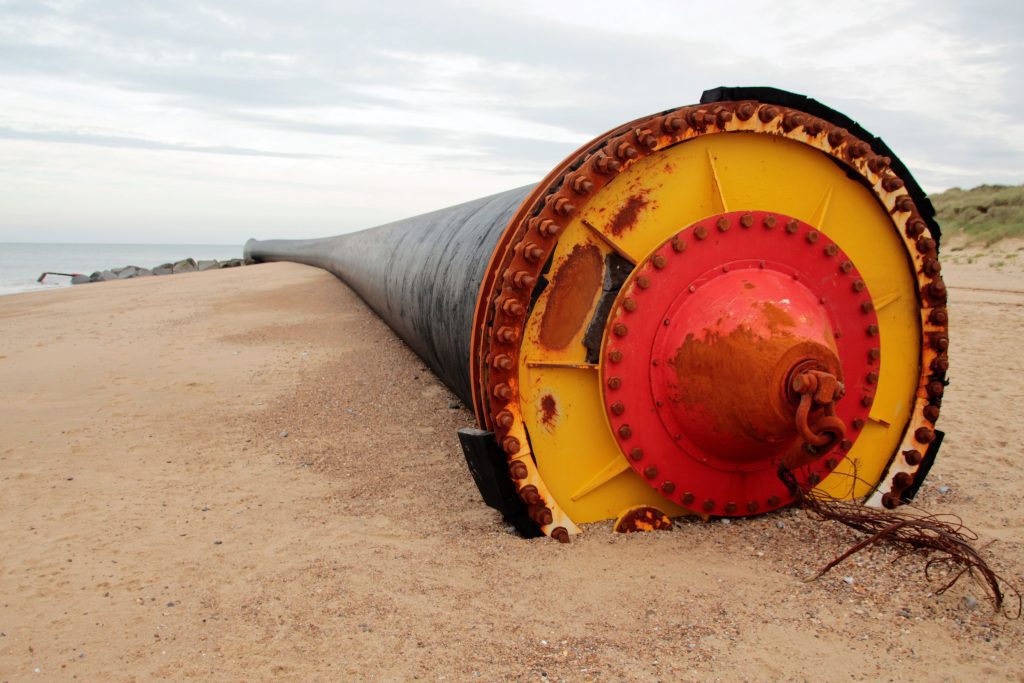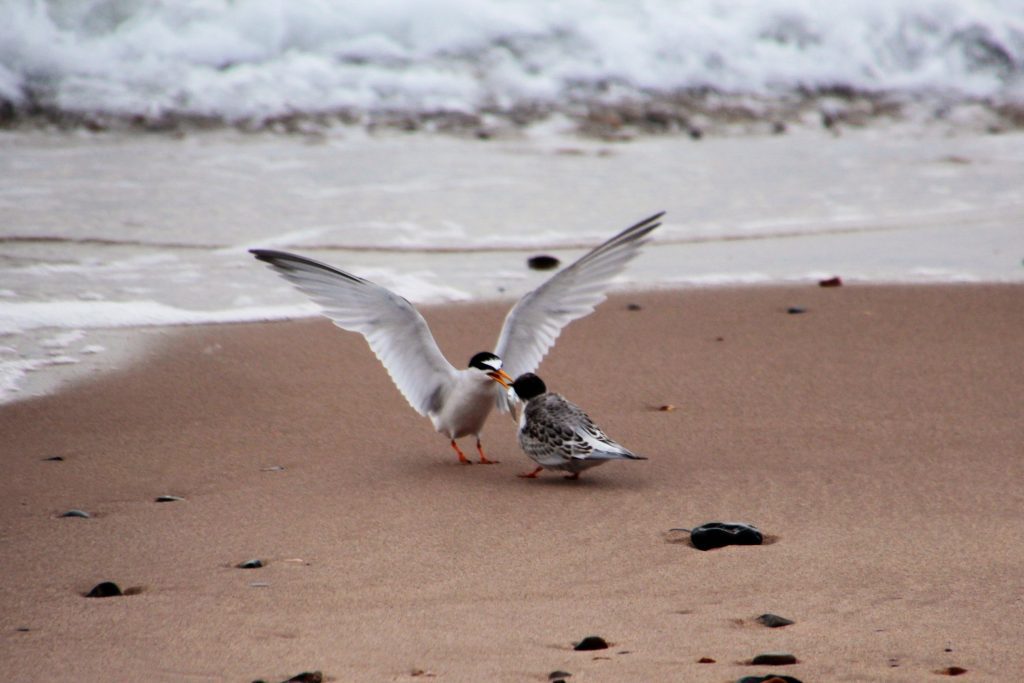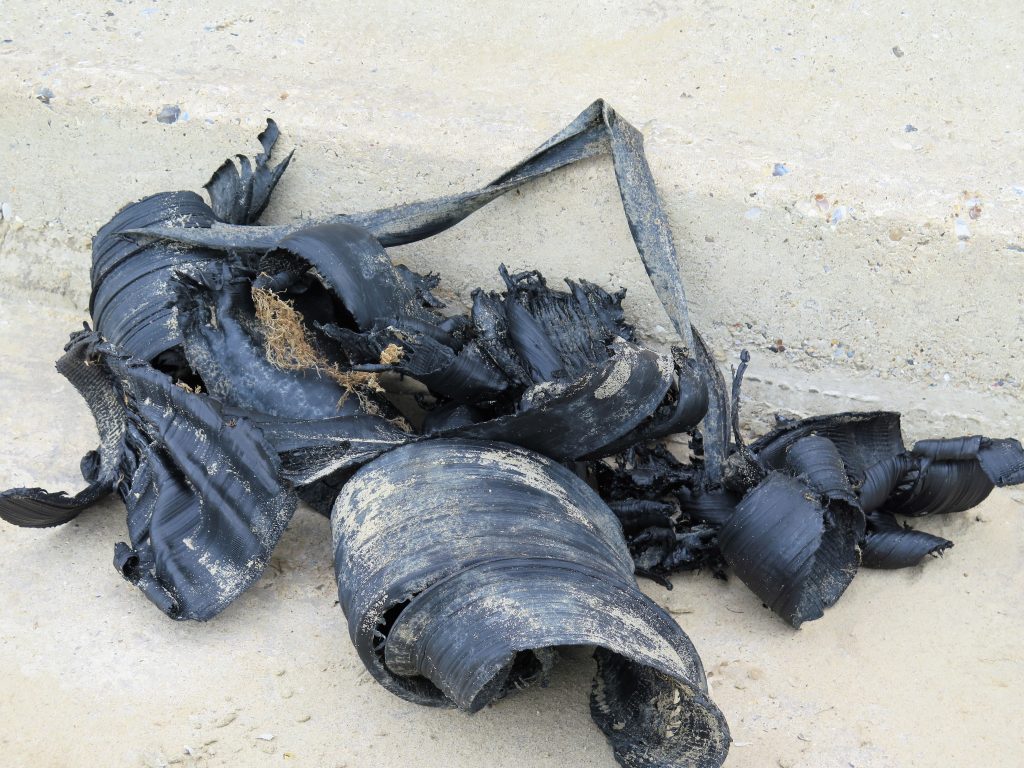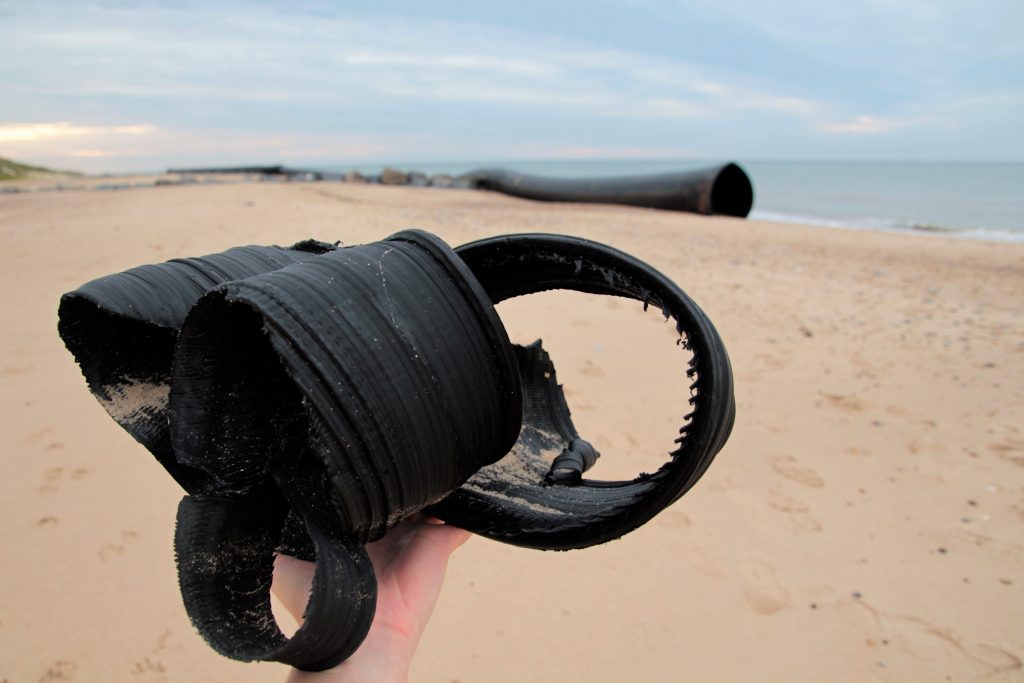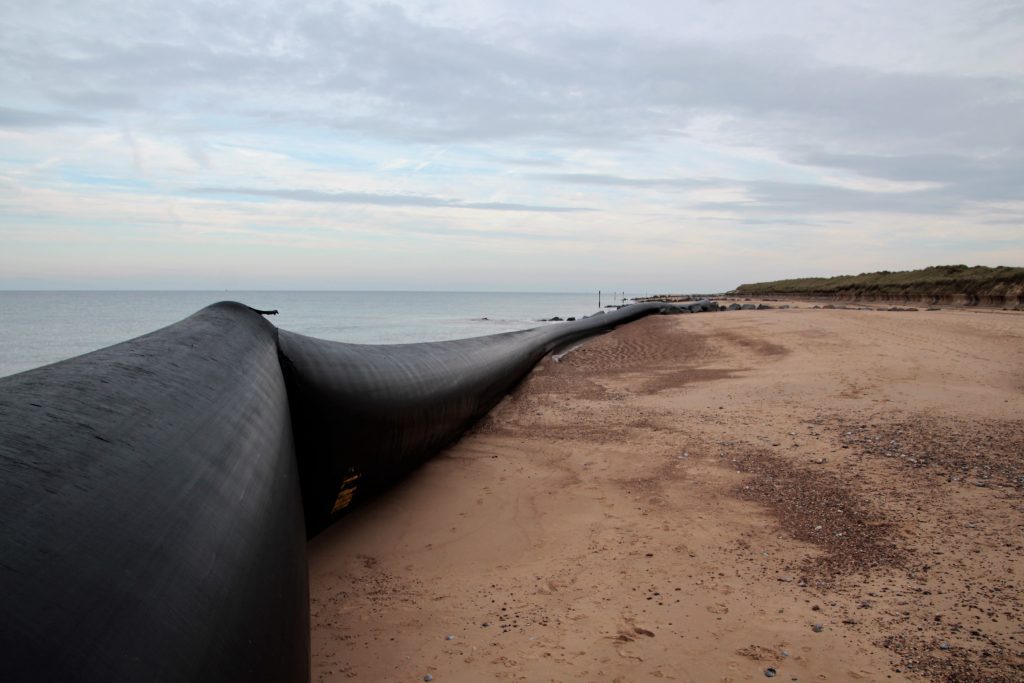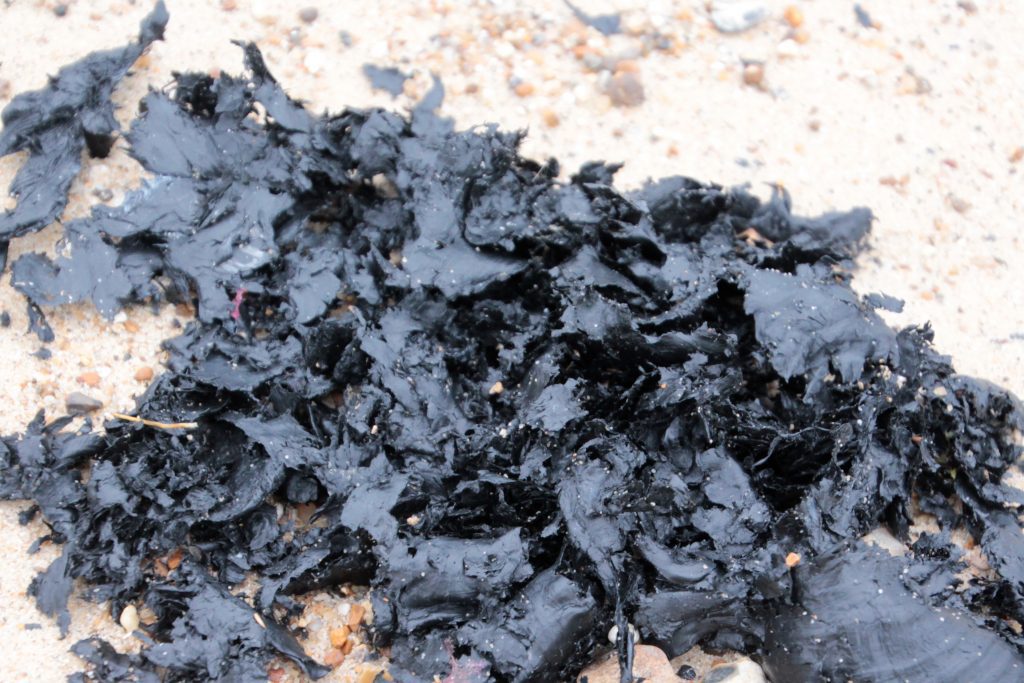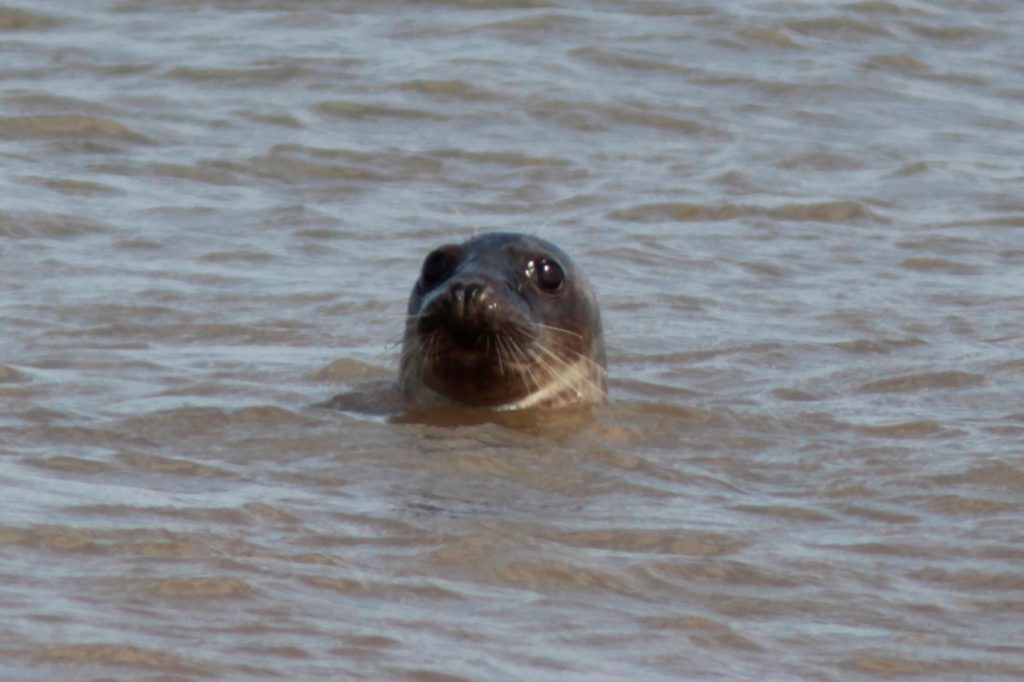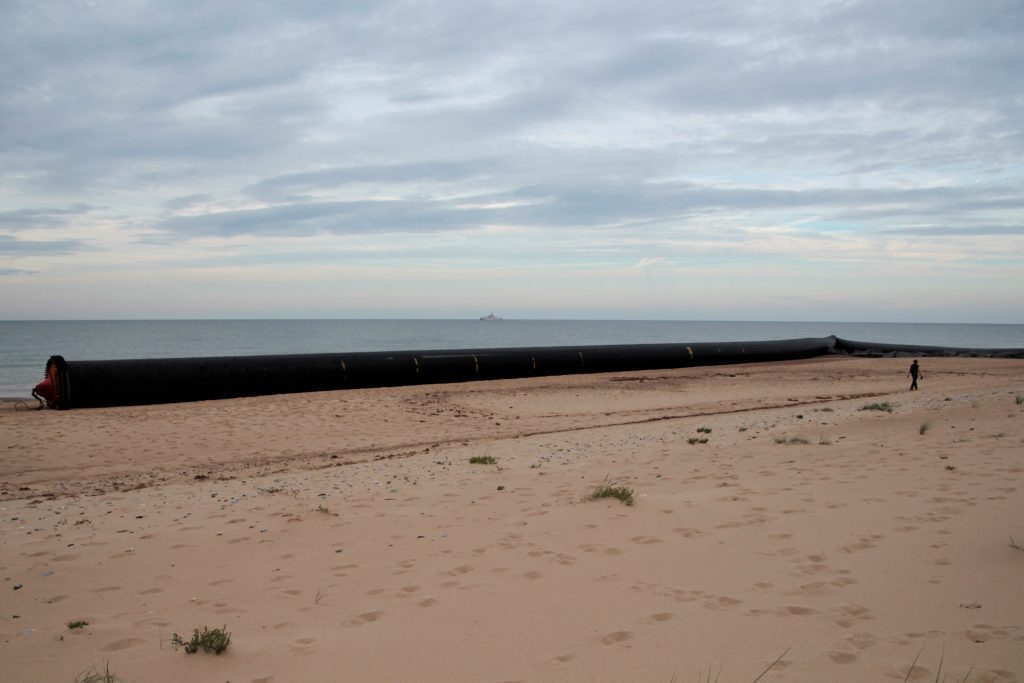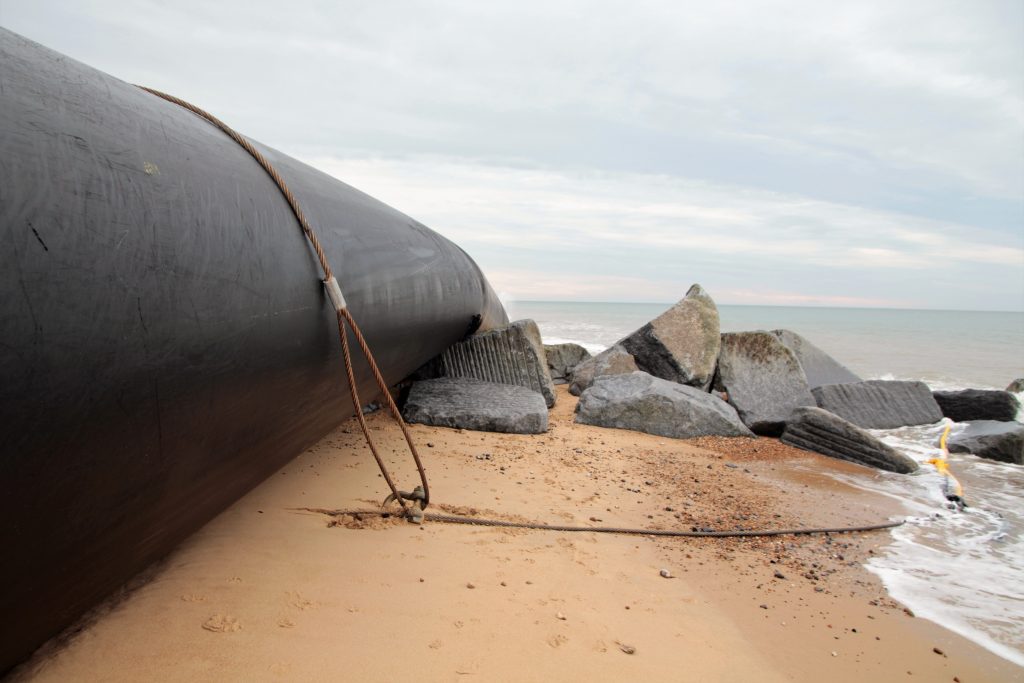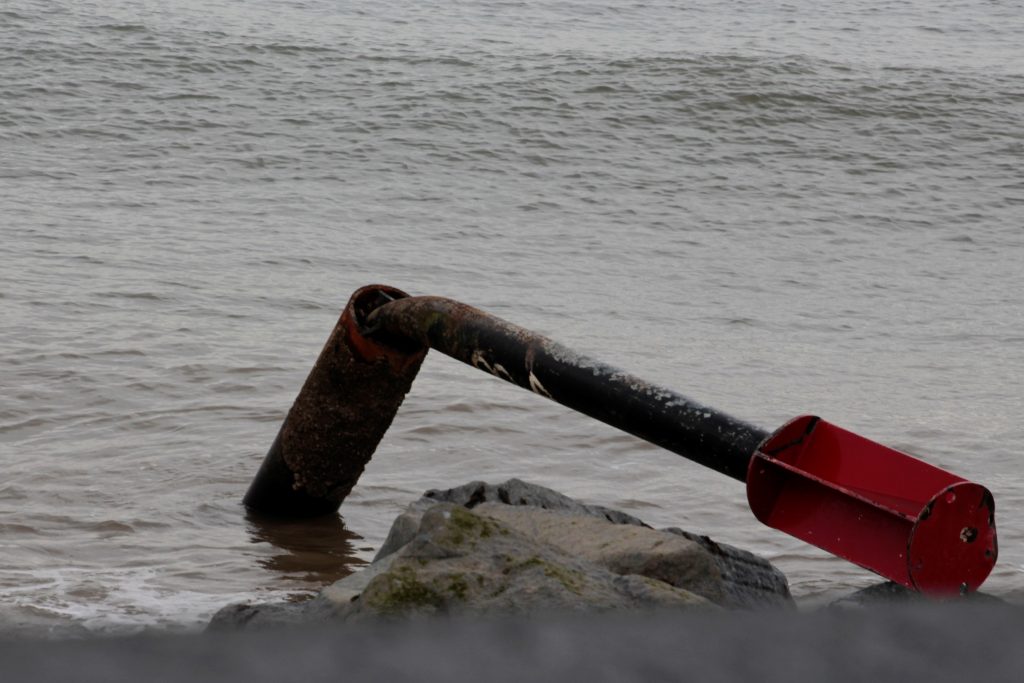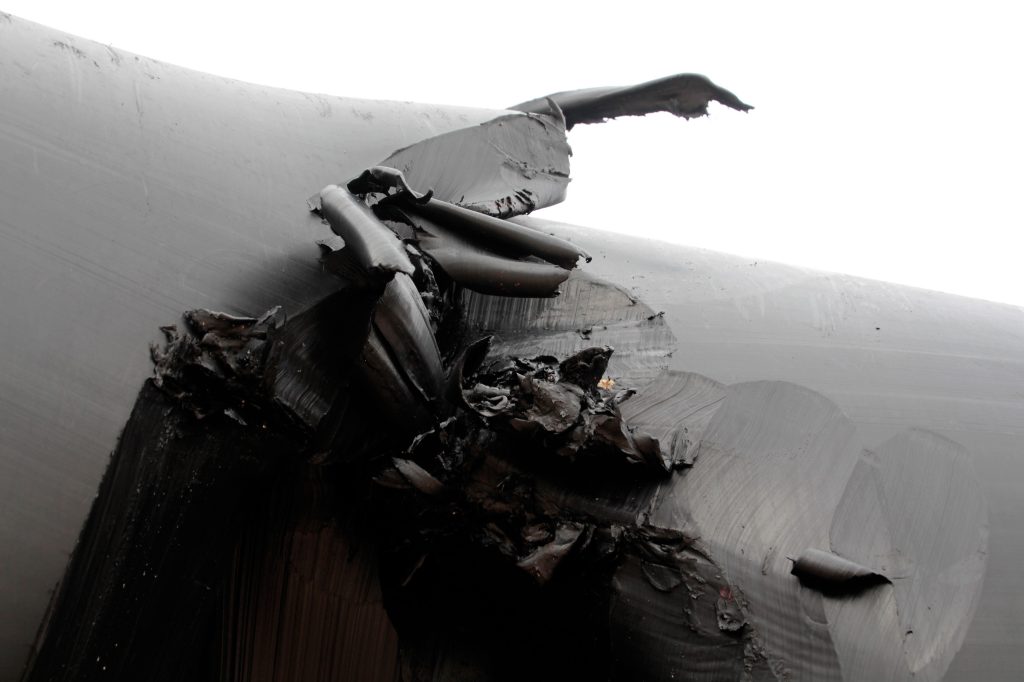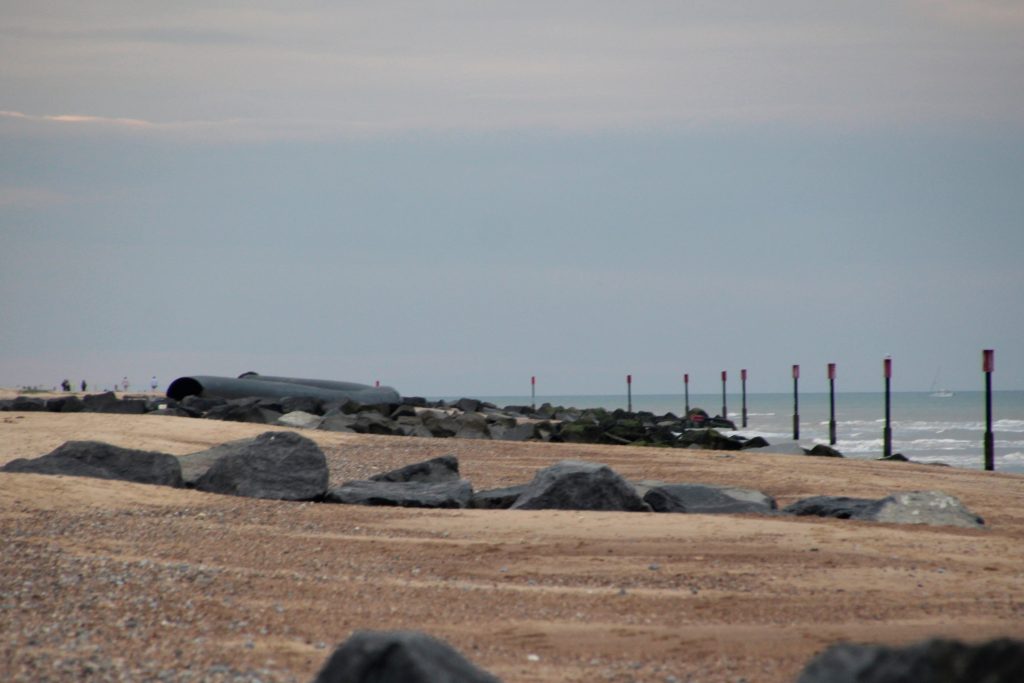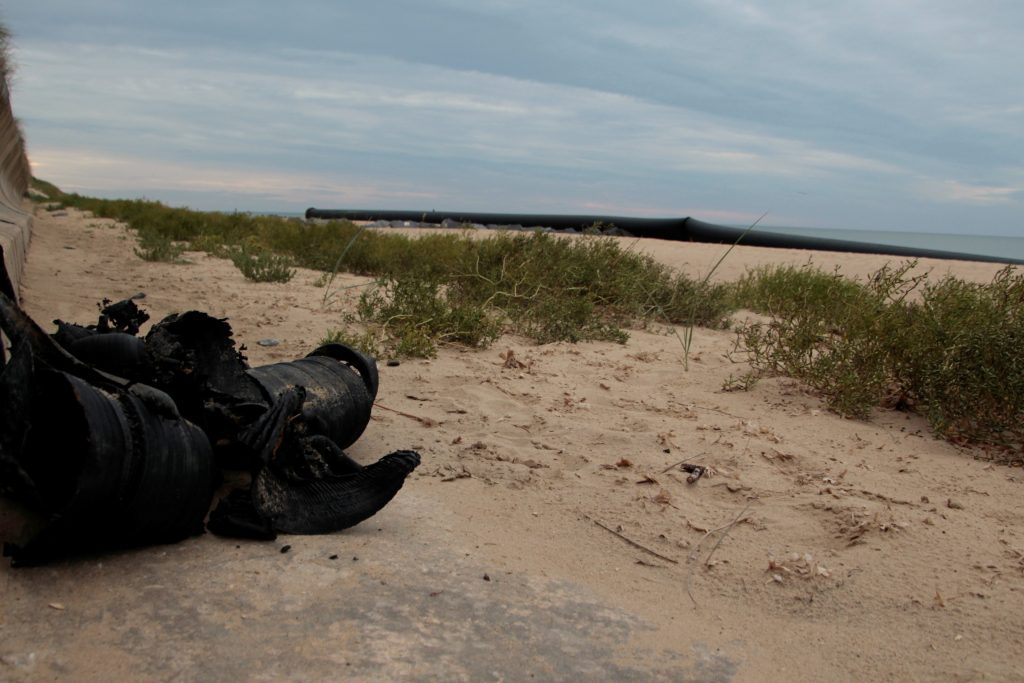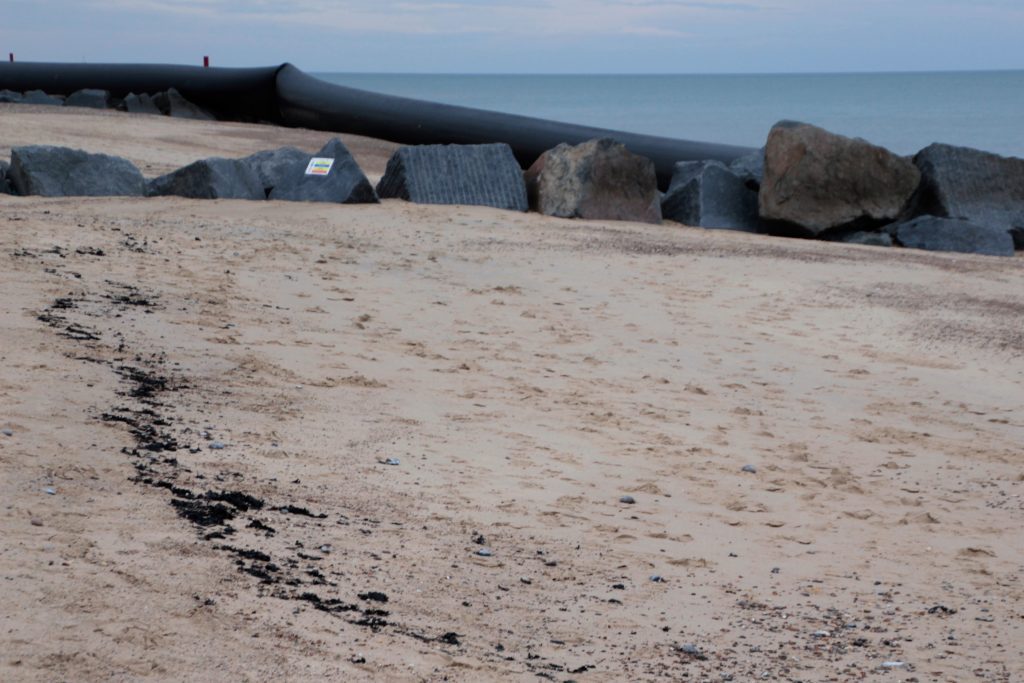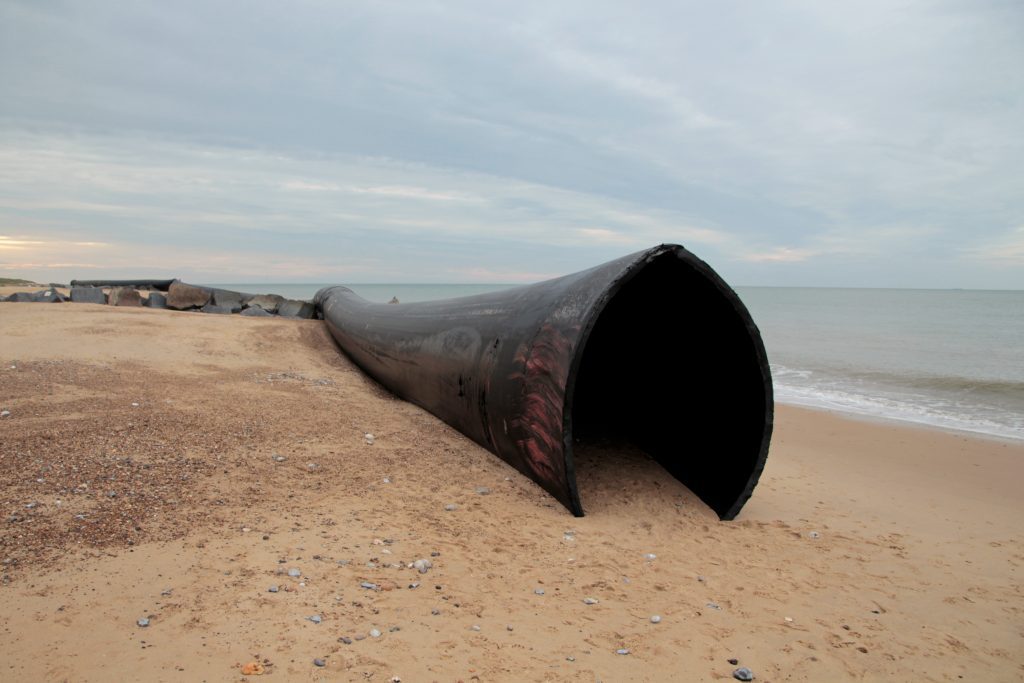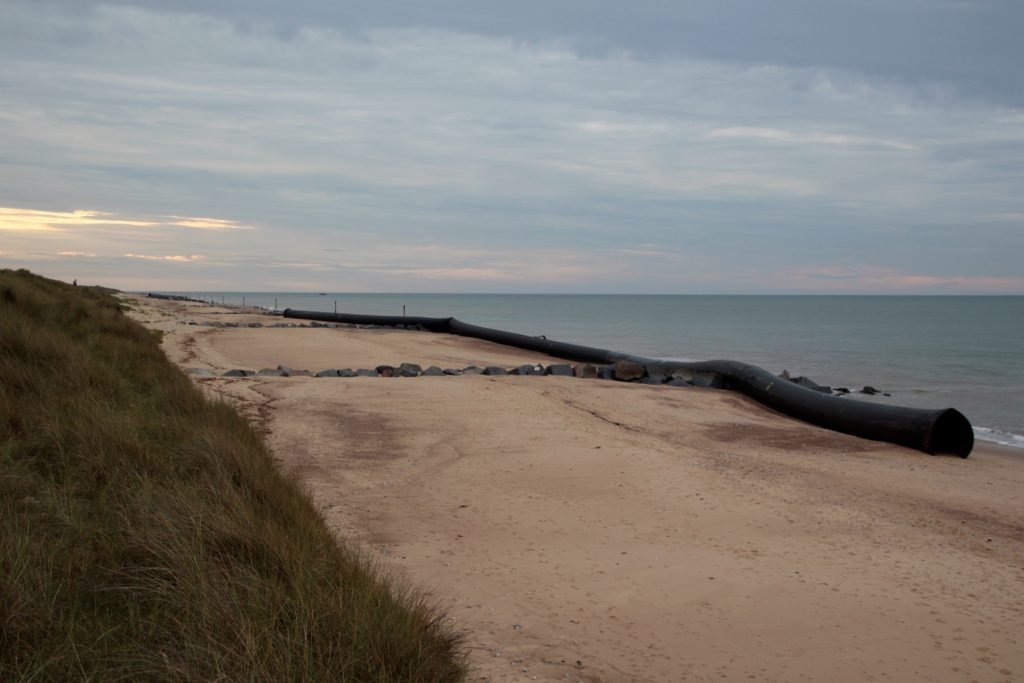By Tracy Brighten
The Maritime and Coastguard Agency says pipes washed ashore in Norfolk pose no danger of pollution. Are they unaware of, or simply ignoring plastic fragments scattered along the coast?
The MCA’s announcement on the pollution risk from four gigantic plastic bore pipes washed up on Norfolk’s east coach beaches was reported by The Guardian. Twelve pipes were being tugged from Norway to Algeria when they came loose after a collision with a container ship. While there are reports that the recovery operation is underway, no-one is talking about the plastic fall out on pristine beaches used by seals and rare seabirds.
At the little tern colony at Winterton-on-Sea where I’ve been a volunteer warden for the RSPB, black plastic polluted the beach on Friday along the high tide line and beyond. There were larger pieces, grooved, twisted and distorted, long, sharply-pointed pieces, and smaller fragments bound together by seaweed. My daughter helped me fill a large bag from the seaward side of the colony where little terns, ringed plovers, sanderlings, dunlins and gulls feed along the shore.
Our lead warden thought the plastic could be debris from the pipes washed ashore. RSPB wardens have been at the colony 24/7 since May and have not seen anything like this. A couple heading in the direction of the pipes thought the pieces were too worn to be from new pipes, but when they returned, they said damage looked consistent with pieces being scraped off by the friction of fast-moving wire or chains wrapped around the pipes. Their theory could explain the plastic debris.
At the end of my warden shift, my daughter and I followed the footsteps of many people who had passed by the colony throughout the afternoon. It’s a sad reflection of the general disregard for wildlife when far fewer people seemed interested in the little terns than the big-news pipes. No doubt a selfie next to the 2.4-metre diameter pipes will be more popular on social media than one taken next to the RSPB’s little tern information boards.
Long before we reached the pipes, we continued to pick up plastic, but the closer we got, the larger the pieces we found. We left our bag by rocks to collect on the way back and gathered up the heavier pieces.
Closer to the pipe, we piled the plastic by the sea wall, beyond the high tide line, hopeful it would be collected by a beach clean-up, or during the pipe recovery operation. With the light fading, there was only so much we could pick up, but we wanted to do something to protect wildlife and ease our helplessness at living in a society with a large-scale pollution problem.
Judging by the weight of one bag of plastic debris, it’s no wonder that even the smaller 285-metre pipe flattened two metal post by the rocks. The pipe was split in the centre and had marks at one end like those made with a chisel or plane. Looking at shavings strewn across the sand, you can only imagine the force of the sea and metal slicing the thick plastic.
The tide was coming in. It was upsetting to think about the plastic that would be taken out to sea. The beaches along this coast are usually clean. When we returned to the little tern colony, a lady asked about the plastic in our hands. On behalf of Friends of Horsey Seals, she was on her way to the pipes to assess whether she should organise a beach clean-up. Maybe if everyone posing by the pipes picked up a few pieces of debris, the Horsey volunteers would be saved a job.
Only a couple of weeks ago while I was on warden duty with another volunteer, a family told us about a distressed seal on Horsey beach, where the pipe we saw came ashore. The seal was emaciated and in pain. A Frisbee around its neck had cut into flesh and blood trickled from the wound. My friend called the RSPCA, but unless you are at the scene and can give a GPS location, they won’t come out. Given their limited resources, this is understandable.
We’ll never know if that seal was rescued and treated. Now the seals coming ashore along this coast have more plastic pollution to contend with.
Having seen the debris, I can’t read about this pipe story without thinking of it as another ecological disaster caused by human error. It isn’t damaging on the scale of an oil slick of course, which may be why the MCA reports no pollution risk, but the cost to wildlife of smaller scale pollution adds up. I am baffled that government agencies seem accepting of ocean pollution unless it is on a grand scale.
Surely the Environment Agency would be better placed to assess the ecological risk of the washed-up pipes? The MCA works “to prevent the loss of life on the coast and at sea,” and given their assessment, this seems to exclude wildlife.
Seals, birds and fish are at risk of injury from sharp debris but also from ingesting smaller fragments, either directly or via the animals they feed on. Filter feeders have been found to ingest plastic particles and this, in turn, affects animals higher up the food chain. A Greenpeace research expedition looking at plastic pollution along Scottish coastlines found significant plastic waste affecting seabirds and marine mammals. Our plastic pollution is out of control.
We must ask questions about these avoidable commercial blunders and publicise their environmental costs on social media, otherwise, wildlife will continue to be a low priority for governments and business. Let’s send a strong message that we care more about the wildlife on our beaches than plastic pipes.
Update August 16th: The four beached pipes were removed on Monday and have been anchored offshore waiting to be moved to Lowestoft and towed back to Norway. Walking from Winterton-on-Sea to Horsey beach yesterday, I filled another bag with plastic debris. The piles we made last Friday (in the hope they would be removed) are still there, posing a risk to wildlife as pieces find their way back onto the beach.
